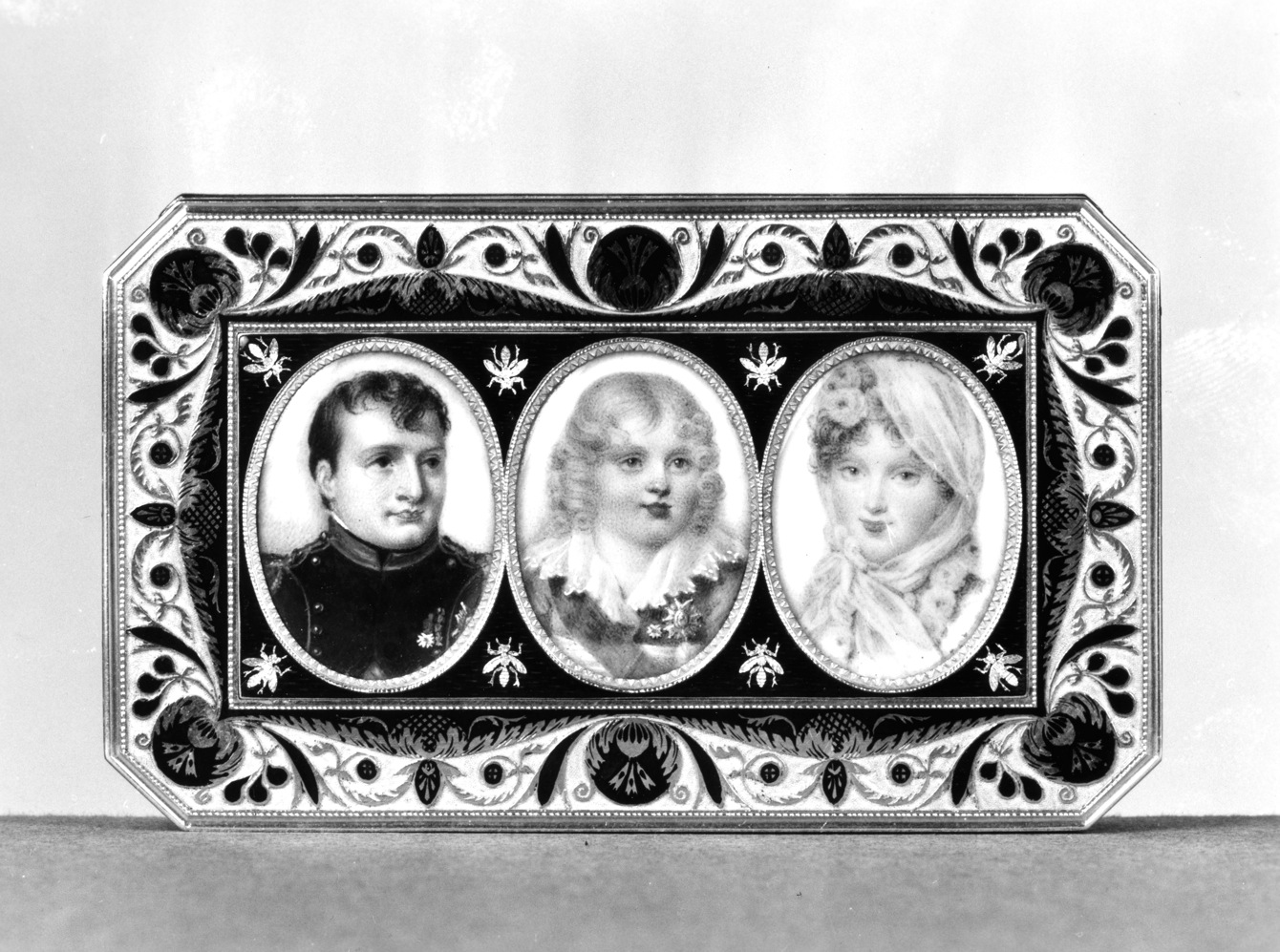Octagonal Box
(18th and 19th Centuries )
This box is chiseled, partially enameled, and set with three oval portrait miniatures representing:
1. Napoleon I (1767-1821) wearing the uniform of "chausseurs à cheval." Visible on his chest is the star of the Legion of Honor.
2. The "King of Rome" (1811-1832), Napoleon's son by his second wife the Empress Marie-Louise. He wears the band and star of the Legion of Honor.
3. Empress Marie-Louise (1791-1847), the daughter of Francis I of Austria, who married Napoleon in 1810.
The bees surrounding the miniatures were imperial symbols alluding to the Napoleon's royal predecessors, the Merovingian Frankish kings who ruled France from the 5th-8th centuries. Jewels discovered in their tombs were mistakenly identified as representing bees rather than cicadas.
Provenance
Provenance (from the French provenir, 'to come from/forth') is the chronology of the ownership, custody, or location of a historical object. Learn more about provenance at the Walters.
William T. Walters, Baltimore [date and mode of acquisition unknown]; Henry Walters, Baltimore, 1894, by inheritance; Walters Art Museum, 1931, by bequest.
Exhibitions
| 2006-2009 | Bedazzled: 5,000 Years of Jewelry from the Walters Art Museum. Frist Center for the Visual Arts, Nashville; The John and Mable Ringling Museum of Art, Sarasota; The Walters Art Museum, Baltimore. |
| 1984 | Objects of Vertu: Precious Works of the Eighteenth Century. The Walters Art Gallery, Baltimore. |
Geographies
France, Paris (Place of Origin)
Measurements
13/16 x 2 1/8 in. (2 x 5.4 cm)
Credit Line
Acquired by William T. Walters
Location in Museum
Not on view
Accession Number
In libraries, galleries, museums, and archives, an accession number is a unique identifier assigned to each object in the collection.
In libraries, galleries, museums, and archives, an accession number is a unique identifier assigned to each object in the collection.
57.218


